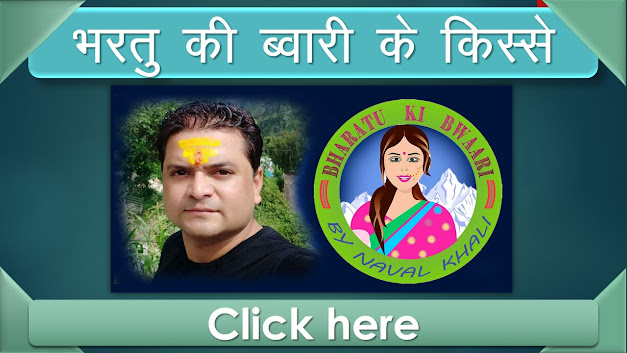17. Catalysing Quality Academic Research in All Fields through a new National Research Foundation
17.1. Knowledge creation and research are critical in growing and sustaining a large and vibrant economy, uplifting society, and continuously inspiring a nation to achieve even greater heights. Indeed, some of the most prosperous civilizations (such as India, Mesopotamia, Egypt, and Greece) to the modern era (such as the United States, Germany, Israel, South Korea, and Japan), were/are strong knowledge societies that attained intellectual and material wealth in large part through celebrated and fundamental contributions to new knowledge in the realm of science as well as art, language, and culture that enhanced and uplifted not only their own civilizations but others around the globe.
17.2. A robust ecosystem of research is perhaps more important than ever with the rapid changes occurring in the world today, e.g., in the realm of climate change, population dynamics and management, biotechnology, an expanding digital marketplace, and the rise of machine learning and artificial intelligence. If India is to become a leader in these disparate areas, and truly achieve the potential of its vast talent pool to again become a leading knowledge society in the coming years and decades, the nation will require a significant expansion of its research capabilities and output across disciplines. Today, the criticality of research is more than ever before, for the economic, intellectual, societal, environmental, and technological health and progress of a nation.
17.3. Despite this critical importance of research, the research and innovation investment in India is, at the current time, only 0.69% of GDP as compared to 2.8% in the United States of America, 4.3% in Israel and 4.2% in South Korea.
17.4. The societal challenges that India needs to address today, such as access for all its citizens to clean drinking water and sanitation, quality education and healthcare, improved transportation, air quality, energy, and infrastructure, will require the implementation of approaches and solutions that are not only informed by top-notch science and technology but are also rooted in a deep understanding of the social sciences and humanities and the various socio-cultural and environmental dimensions of the nation. Facing and addressing these challenges will require high-quality interdisciplinary research across fields that must be done in India and cannot simply be imported; the ability to conduct one ’s own research also enables a country to much more easily import and adapt relevant research from abroad.
17.5. Furthermore, in addition to their value in solutions to societal problems, any country's identity, upliftment, spiritual/intellectual satisfaction and creativity is also attained in a major way through its history, art, language, and culture. Research in the arts and humanities, along with innovations in the sciences and social sciences, are, therefore, extremely important for the progress and enlightened nature of a nation.
17.6. Research and innovation at education institutions in India, particularly those that are engaged in higher education, is critical. Evidence from the world’s best universities throughout history shows that the best teaching and learning processes at the higher education level occur in environments where there is also a strong culture of research and knowledge creation; conversely, much of the very best research in the world has occurred in multidisciplinary university settings.
17.7. India has a long historical tradition of research and knowledge creation, in disciplines ranging from science and mathematics to art and literature to phonetics and languages to medicine and agriculture. This needs to be further strengthened to make India lead research and innovation in the 21st century, as a strong and enlightened knowledge society and one of the three largest economies in the world.
17.8. Thus, this Policy envisions a comprehensive approach to transforming the quality and quantity of research in India. This includes definitive shifts in school education to a more play and discovery- based style of learning with emphasis on the scientific method and critical thinking. This includes career counselling in schools towards identifying student interests and talents, promoting research in universities, the multidisciplinary nature of all HEIs and the emphasis on holistic education, the inclusion of research and internships in the undergraduate curriculum, faculty career management systems that give due weightage to research, and the governance and regulatory changes that encourage an environment of research and innovation. All of these aspects are extremely critical for developing a research mindset in the country.
17.9. To build on these various elements in a synergistic manner, and to thereby truly grow and catalyze quality research in the nation, this policy envisions the establishment of a National Research Foundation (NRF). The overarching goal of the NRF will be to enable a culture of research to permeate through our universities. In particular, the NRF will provide a reliable base of merit-based but equitable peer-reviewed research funding, helping to develop a culture of research in the country through suitable incentives for and recognition of outstanding research, and by undertaking major initiatives to seed and grow research at State Universities and other public institutions where research capability is currently limited. The NRF will competitively fund research in all disciplines. Successful research will be recognized, and where relevant, implemented through close linkages with governmental agencies as well as with industry and private/philanthropic organizations.
17.10. Institutions that currently fund research at some level, such as the Department of Science and Technology (DST), Department of Atomic Energy (DAE), Department of Bio-Technology (DBT), Indian Council of Agriculture Research (ICAR), Indian Council of Medical Research (ICMR), Indian Council of Historical Research (ICHR), and University Grants Commission (UGC), as well as various private and philanthropic organizations, will continue to independently fund research according to their priorities and needs. However, NRF will carefully coordinate with other funding agencies and will work with science, engineering, and other academies to ensure synergy of purpose and avoid duplication of efforts. The NRF will be governed, independently of the government, by a rotating Board of Governors consisting of the very best researchers and innovators across fields.
17.11. The primary activities of the NRF will be to:
(a) fund competitive, peer-reviewed grant proposals of all types and across all disciplines;
(b) seed, grow, and facilitate research at academic institutions, particularly at universities and colleges where research is currently in a nascent stage, through mentoring of such institutions;
(c) act as a liaison between researchers and relevant branches of government as well as industry, so that research scholars are constantly made aware of the most urgent national research issues, and so that policymakers are constantly made aware of the latest research breakthroughs; so as to allow breakthroughs to be optimally brought into policy and/or implementation; and
(d) recognise outstanding research and progress
English Link
- NatNational Education Policy 2020ional
- NEP 2020 ,Part I. SCHOOL EDUCATION
- NEP 2020 ,Part I. Curriculum and Pedagogy in Schools: Learning Should be Holistic, Integrated, Enjoyable, and Engaging
- NEP 2020 ,Part I. Teachers
- NEP 2020 ,Part I, Equitable and Inclusive Education: Learning for All
- NEP 2020 ,Part I, Efficient Resourcing and Effective Governance through School Complexes/Clusters
- NEP 2020 ,Part I, Standard-setting and Accreditation for School Education
- NEP 2020 , Part II, HIGHER EDUCATION
- NEP 2020 , Part II, HIGHER EDUCATION, Institutional Restructuring and Consolidation
- NEP 2020 , Part II, HIGHER EDUCATION, Towards a More Holistic and Multidisciplinary Education
- NEP 2020 , Part II, HIGHER EDUCATION, Optimal Learning Environments and Support for Students
- NEP 2020 , Part II, HIGHER EDUCATION, Motivated, Energized, and Capable Faculty
- NEP 2020 , Part II, HIGHER EDUCATION, Equity and Inclusion in Higher Education
- NEP 2020 , Part II, HIGHER EDUCATION, Teacher Education
- NEP 2020 , Part II, HIGHER EDUCATION, Reimagining Vocational Education
- NEP 2020 , Part II, HIGHER EDUCATION, Catalysing Quality Academic Research in All Fields through a new National Research Foundation
- NEP 2020 , Part II, HIGHER EDUCATION, Transforming the Regulatory System of Higher Education
- NEP 2020 , Part II, HIGHER EDUCATION, Effective Governance and Leadership for Higher Education Institutions
- NEP 2020, Part III, OTHER KEY AREAS OF FOCUS
- NEP 2020, Part III, Adult Education and Lifelong Learning
- NEP 2020, Part III, Promotion of Indian Languages, Arts, and Culture
- NEP 2020, Part III, Technology Use and Integration
- NEP 2020, Part III, Online and Digital Education: Ensuring Equitable Use of Technology
- NEP 2020, Part IV, MAKING IT HAPPEN
हिंदी लिंक
- NatNational Education Policy 2020ional (राष्ट्रीय शिक्षा नीति 2020)
- एनईपी 2020, भाग I। स्कूल शिक्षा
- एनईपी 2020, भाग I। स्कूलों में पाठ्यचर्या और शिक्षाशास्त्र: सीखना समग्र, एकीकृत, आनंददायक और आकर्षक होना चाहिए
- एनईपी 2020, भाग I। शिक्षक
- एनईपी 2020, भाग I, समान और समावेशी शिक्षा: सभी के लिए सीखना
- एनईपी 2020, भाग I, स्कूल परिसरों / समूहों के माध्यम से कुशल संसाधन और प्रभावी शासन
- एनईपी 2020, भाग I, स्कूली शिक्षा के लिए मानक-सेटिंग और प्रत्यायन
- एनईपी 2020, भाग II, उच्च शिक्षा
- एनईपी 2020, भाग II, उच्च शिक्षा, संस्थागत पुनर्गठन और समेकन
- NEP 2020, भाग II, उच्च शिक्षा, एक अधिक समग्र और बहुविषयक शिक्षा की ओर
- एनईपी 2020, भाग II, उच्च शिक्षा, इष्टतम शिक्षण वातावरण और छात्रों के लिए समर्थन
- एनईपी 2020, भाग II, उच्च शिक्षा, प्रेरित, ऊर्जावान और सक्षम संकाय
- NEP 2020, भाग II, उच्च शिक्षा, समानता और उच्च शिक्षा में समावेश
- एनईपी 2020, भाग II, उच्च शिक्षा, शिक्षक शिक्षा
- एनईपी 2020, भाग II, उच्च शिक्षा, व्यावसायिक शिक्षा की पुनर्कल्पना
- एनईपी 2020, भाग II, उच्च शिक्षा, एक नए राष्ट्रीय अनुसंधान फाउंडेशन के माध्यम से सभी क्षेत्रों में गुणवत्तापूर्ण शैक्षणिक अनुसंधान को उत्प्रेरित करना
- NEP 2020, भाग II, उच्च शिक्षा, उच्च शिक्षा की नियामक प्रणाली को बदलना
- NEP 2020, भाग II, उच्च शिक्षा, उच्च शिक्षा संस्थानों के लिए प्रभावी शासन और नेतृत्व
- एनईपी 2020, भाग III, फोकस के अन्य प्रमुख क्षेत्र
- एनईपी 2020, भाग III, प्रौढ़ शिक्षा और आजीवन शिक्षा
- एनईपी 2020, भाग III, भारतीय भाषाओं, कला और संस्कृति को बढ़ावा देना
- एनईपी 2020, भाग III, प्रौद्योगिकी उपयोग और एकीकरण
- एनईपी 2020, भाग III, ऑनलाइन और डिजिटल शिक्षा: प्रौद्योगिकी का समान उपयोग सुनिश्चित करना
- एनईपी 2020, भाग IV, इसे संभव बनाना











Follow Us